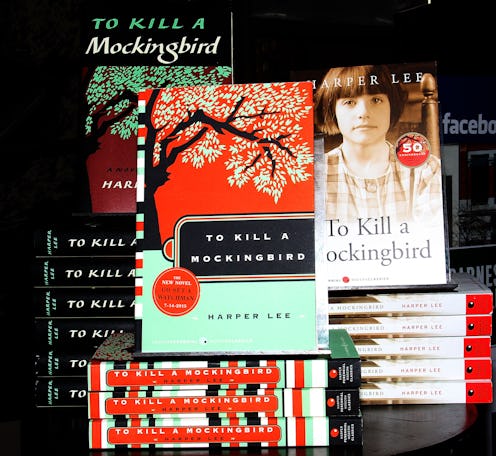Books
These Books All Had *Very* Different First Drafts
Rumor has it that Shakespeare “never blotted out a line.” Maybe the Bard was able to create perfect first drafts, but most authors wouldn’t say the same. Author Anne Lamott writers in her book Bird by Bird that “almost all good writing begins with terrible first efforts. You need to start somewhere. Start by getting something—anything—down on paper.” She knows “some very great writers, writers you love who write beautifully and have made a great deal of money, and not one of them sits down routinely feeling wildly enthusiastic and confident. Not one of them writes elegant first drafts.” So the Bard is in the minority, evidently, because most finished books have very different first drafts.
It’s always encouraging to hear that even great writers create imperfect drafts, because it humanizes them (but also shows just how much work goes into writing a great book). As readers, we usually only see the polished final version of books, but this is often far from where the story started. Even some of the most famous books began with very different storylines and characters. Shakespeare’s lines might have been left untouched, but here are some books that went through many revisions:
1. Gone With The Wind by Margaret Mitchell
The storyline of the first draft was similar to the final edit, but a few key names were changed for the final version. The original draft of Gone With the Wind was titled Tomorrow is Another Day, and Scarlett O'Hara was was originally named Pansy. Huh. Somehow, this just doesn't have the same ring to it.
2. The Adventures of Sherlock Holmes by Arthur Conan Doyle
Sherlock Holmes also had a different name in the first draft. Doyle originally called his famous detective Sherrinford Hope, and Dr. Watson was Dr. Ormond Sacker.
3. Harry Potter And The Sorcerer's Stone by J.K. Rowling
The first chapter in Rowling's famous series was almost very different. In one draft, you actually saw Voldemort kill the Potters in Godric's Hollow, after Muggles betrayed their location (this was pre-Pettigrew). Before Pettigrew, there was also a character named Pyrites (AKA fool's gold), a man who wore white silk gloves and served Voldemort. But the very first drafts were probably the furthest from the chapter we now love: the Potters lived on an island, the Grangers lived on the mainland, and Mr. Granger sees something explode on the island. He swims out to investigate and finds their house destroyed and the Potters dead. A little darker than the final version.
4. Lord Of The Flies by William Golding
This book's first draft was a lot more fantastical than its final draft. Initially, Simon has a premonition about his death, and accepts it to save the rest of the boys on the island. Golding's editor recommended that the magical elements of the book be "toned down," and the result is the classic we all read in school.
5. To Kill A Mockingbird by Harper Lee
Go Set a Watchmen, which was released in 2015 and billed as a sequel to To Kill A Mockingbird, is now widely believed to be the first draft of Harper Lee's Pulitzer Prize winning classic. Lee's editor, Tay Hohoff, helped guide a series of revisions that led to the eventual publication of To Kill A Mockingbird. It's unclear if Lee intended for Go Set A Watchman to ever be released; certainly, most authors would prefer their first drafts never see the light of day.
6. A Portrait Of The Artist As A Young Man by James Joyce
Before A Portrait of the Artist as a Young Man, James Joyce wrote Stephen Hero. In that draft, he first tried out the interior monologue technique. He wasn't a fan of Stephen Hero, but the experiment later evolved into a well-known work.
7. The Great Gatsby by F. Scott Fitzgerald
Before The Great Gatsby, Fitzgerald wrote several stories exploring similar themes, including Winter Dreams. He told his editor in a 1925 letter that this was "a sort of first draft of the Gatsby idea," and it's about a man named Dexter Green who becomes infatuated with a woman named Judy Jones. Dexter is the son of a grocery store owner who caddies at a golf course, which is where he meets Judy. He is obsessed with luxury and eventually becomes wealthy, but — spoiler alert — his love story with Judy still doesn't work out.
8. Persuasion by Jane Austen
Jane Austen's Persuasion had a different ending, but Austen canceled these chapters, calling them "tame and flat." Chapter 10 in Volume II was heavily edited after Austen decided to change the end, but the original is mostly Anne's inner thoughts about Wentworth.
Image: Loew's Inc (1)
